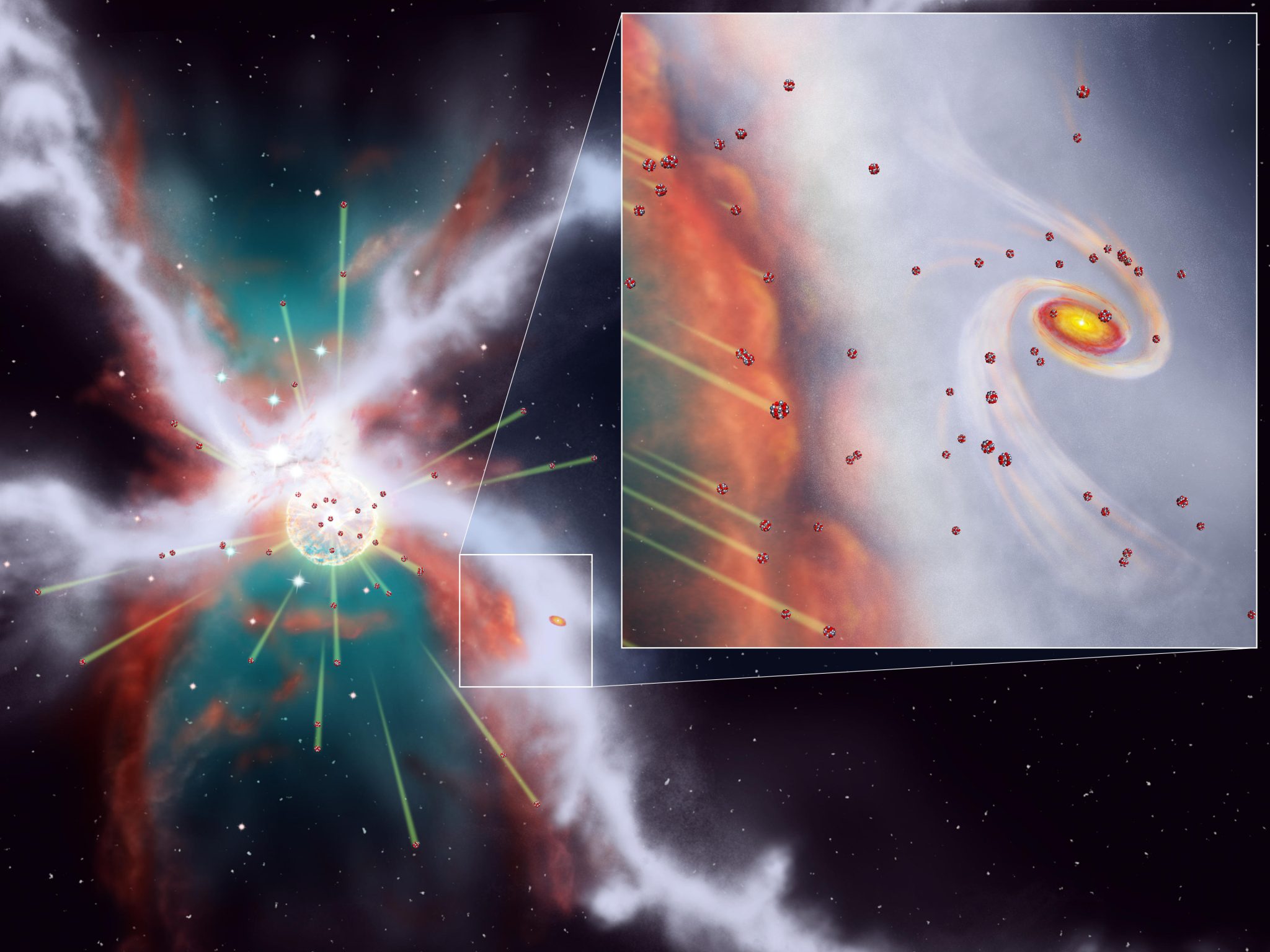
Artist’s impression of the blast wave from a supernova colliding with the filaments of the molecular cloud where the Sun is forming. Credit: NAOJ
Evidence from isotopic ratios within meteorites indicates that the supernova explosion occurred nearby while our sun and solar system were still in their formative stages. The resulting supernova explosion could have destroyed the nascent solar system.
New calculations reveal that filaments of molecular gas, the birth cocoon of our solar system, played an important role in trapping isotopes detected in meteorites. At the same time, this thread served as a shield, protecting the nascent solar system from the destructive forces of a nearby supernova explosion.
Primordial meteorites preserve information about conditions at the birth of the sun and planets. The meteorite components show an inhomogeneous concentration of the radioactive isotope of aluminum.
This difference indicates that an additional amount of radioactive aluminum was introduced soon after the formation of the solar system began. A nearby supernova explosion is the best candidate for this injection of new radioisotopes.
But a supernova that was close enough to deliver the amount of isotopes seen in meteorites would also have created a blast wave powerful enough to rip through the nascent solar system.
A team led by Doris Arzumanian at the National Astronomical Observatory of Japan has proposed a new explanation for how the solar system acquired the amount of isotopes measured in meteorites while surviving the shock of a supernova. Stars form in large groups called clusters within giant clouds of molecular gas.
These molecular clouds are filamentous. Small stars like the Sun usually form along filaments and larger stars, which will explode in a supernova, usually form in axons where multiple filaments intersect.
Assuming that the sun formed along a dense molecular gaseous filament, and a supernova exploded in a nearby filamentous axis, the team’s calculation showed that it would take at least 300,000 years for the blast wave to break apart the dense filaments around the forming solar system.
The components of meteorites enriched with radioactive isotopes formed in about 100,000 years of formation of the solar system within the dense filament. The parent filament may have acted as a barrier to protect the young sun and helped capture radioactive isotopes from the supernova’s blast wave and channel them into the still-forming solar system.
Reference: “Insights on the Sun’s Birth Environment in the Context of Star Cluster Formation in Hub-Filament Systems” by Doris Arzumanian, Sota Arakawa, Masato N. Kobayashi, Kazunari Iwasaki, Kohei Fukuda, Shoji Mori, Yutaka Hirai, Masanobu Kunetomo, MS Nanda Kumar and Ichiro Kokobo, April 25, 2023, Available here. the[{” attribute=””>Astrophysical Journal Letters.
DOI: 10.3847/2041-8213/acc849

“Reader. Infuriatingly humble coffee enthusiast. Future teen idol. Tv nerd. Explorer. Organizer. Twitter aficionado. Evil music fanatic.”
